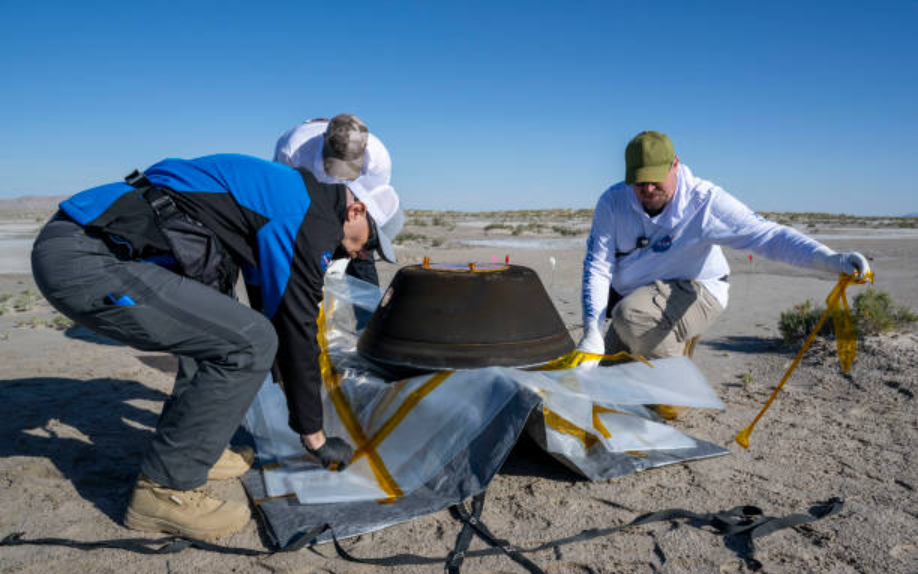NASA scientists are rejoicing after successfully unlocking the capsule with a sample of asteroid Bennu, over three months post its return to Earth.
The jubilation follows a challenging period during which two screws securing the lid became stuck, necessitating a specially designed, sterile environment for the delicate operation.
The complexity of the situation arose due to the stringent conditions required for handling the precious space dust.
The traditional solution of using any available hacksaw was ruled out, prompting the team at the Johnson Space Center to embark on weeks of designing innovative multi-part tools tailored for the task.
These specialized tools included custom-fabricated bits made from a specific grade of surgical, non-magnetic stainless steel, the hardest metal approved for use in pristine curation gloveboxes. The team’s efforts proved successful, finally unlocking the capsule and allowing access to the asteroid sample.
NASA’s Pioneering Achievement in Space Exploration

The OSIRIS-REx mission, which collected rocks and dust (regolith) from Bennu’s surface in 2020, covered a distance of 200 million miles back to Earth. The spacecraft executed a touch-and-go sample acquisition mechanism, known as TAGSAM, designed to grab a sample of the asteroid’s surface.
Following the breakthrough in opening the capsule, steps are now underway to complete the disassembly of the TAGSAM head, revealing the rest of the rocks and dust collected during NASA’s first asteroid sample return mission.
The global scientific community has been actively analyzing the substantial amount of dust on top of the capsule that made its way back to Earth.
The success in overcoming the challenges was lauded by Eileen Stansbery, a division chief at the Johnson Space Centre, who highlighted the resilience and dedication of the engineers and scientists involved.
Despite encountering hurdles, the curation team collected an impressive 70.3g of asteroid material from the sample hardware, surpassing NASA’s initial goal of bringing at least 60g to Earth. (charleseitel.com)
The accomplishment marks a significant milestone in space exploration and underscores NASA’s commitment to pushing the boundaries of scientific achievement.


Comments are closed.